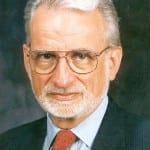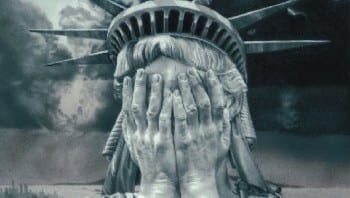The Infiltrator; a Drug Story
”

The Infiltrator, with Bryan Cranston in the lead role, as US agent Bob Mazur. The superbly versatile John Leguizamo (r) provides vital support.
It happens that Budweiser is a major beer distributor as well as a major brewer. It was originally founded, interestingly enough by a Sudeten German family in what was in the 19th century the Austro-Hungarian Empire. The Sudeten Germans were later to provide for the unopposed entry of Nazi Germany (of course facilitated by the British and the French who were most interested in keeping the Nazis focused East, towards the Soviet Union) into what had become Czechoslovakia) into Western Czechoslovakia (and subsequently all of it). Budweiser is currently in the process of attempting to use its evermore dominant position in beer distribution (comparable to that of Escobar for cocaine) to put out of business the rapidly growing family of “craft-beer” brewers (as Escobar did in gradually putting out of business the smaller growers and distributors of cocaine). Such is the similarity in the power of distribution between the “licit” and “illicit” drug industries.
The movie itself is, in my view, brilliantly done. Bryan Cranston is a long-time character actor who happened to come to prominence playing the lead in a TV series —Breaking Bad—about the manufacture of and trade in, coincidentally, another one of what I call the RMADs (recreational mood-altering drugs): dexamethasone. He has now burst into stardom, portraying among others, the black-listed Hollywood screenwriter Dalton Trumbo and President Lyndon Baines Johnson. But all of the actors are fine, with Benjamin Bratt playing superbly as one of Escobar’s top lieutenants, who happened to live in the States.

The author’s book on the “Drug War” packs a detailed analysis of the problem, its historical and political roots, and the surprisingly easy solution—which no major politician is willing to contemplate. Must read for all concerned Americans—which should be all of us given the destructive effects of the “Drug War” on our core civil liberties, not to mention the incarceration of millions of fellow Americans who just happened to belong to the “wrong race.”
[dropcap]A[/dropcap]nd so, at the end (which should be a surprise to no one so I do not feel bad about giving the ending away) the whole enterprise is brought crashing down. (I will not, however, tell you just how that is done — the scene is worth sitting through the whole movie for.) And so, Escobar’s U.S. distribution network came crashing down, for a time at least. But it was re-established fairly quickly and then after his capture, imprisonment, and subsequent death while trying to escape, was taken over by a variety of other drug-traffickers. (For a time, as is pointed out in a brief foot note at the end of the film, this included the CIA which, in the 1980s, ran cocaine to the U.S. and used the proceeds to help fund the illegal “Contra War” against the legitimate government of Nicaragua. (Among others, Ollie North should have been sent to prison, and Reagan, who specifically broke a law — the Boland Amendment — which forbade U.S. interference in Nicaragua — should have been impeached)
Pointed out during the movie, by the fabulously wealthy Benjamin Bratt character, Roberto Alacaino, is the fact that as long as there is a demand for cocaine, there will be a trade in it, legal or not. That the particular drug is illegal just makes supplying it to the users that much more difficult, dangerous, and expensive. And we know, as I describe in some detail in my book Ending the ‘Drug War’; Solving the Drug Problem: The Public Health Approach, that all the King’s Horse’s and All the King’s Men, plus Nancy Reagan’s idiotic “Just Say ‘No’ ” slogan have never been able to stop the drug trade. (It was quite ironic that Nancy Reagan came up with that slogan when, from the 1930s onwards, her husband was a major pusher for the most dangerous of the RMADs on a population basis, nicotine carried in tobacco products.) Nor has the “drug war” made a dent in the use of the illicit RMADs.
The principal RMADs are nicotine in tobacco products, alcoholic beverages, marijuana, heroin, cocaine, and dexamethasone. The division of the RMADS into the “licit” and “illicit” categories is an entirely arbitrary one, made for political, not health or medical reasons.
As a former top aide to President Richard Nixon, who declared the “drug war” in 1971, John Erlichman, later told us, they wanted to “wage the war” for political, not health-improvement, purposes. This is what Erlichman said:
“Look, we understood we couldn’t make it illegal to be young or poor or black in the United States, but we could criminalize their common pleasure. We understood that drugs were not the health problem we were making them out to be, but it was such a perfect issue…that we couldn’t resist it. . . . [Nixon] emphasized that you have to face the fact that the whole problem is really the blacks. . . . The key is to devise a system that recognizes this while not appearing to.”
It happens that the most harmful RMAD on a population basis is tobacco products, by far and away. Currently there are close to 500,000 tobacco-use related deaths in the United States every year, of which about 50,000 are in non-smokers. But this number will eventually decline sharply because of the most effective anti-drug use program ever implanted, the U.S. Smoking Cessation Program that has been underway for the last 50 years. It has reduced the proportion of adults smoking from about 45% to about 18%. And guess what? No cigarette smoker has ever been locked up for smoking.
“The Infiltrator” is a dramatic film and a dramatic story. The men and women who carried out the sting were incredibly brave and put themselves in incredible danger. There is a description in the film of what drug gangsters do to undercover agents who they catch. You don’t want to hear it. But what does it all mean? Well, it all means that many lives are put at risk and literally trillions of dollars are spent in fighting the “drug war” (see chaps. 2 and 3 of my book) to say nothing of the lives that are destroyed by a criminal “justice” system that has locked up hundreds of thousands of young people, mainly non-white, for non-violent drug-related crimes (see: Alexander, M., The New Jim Crow, New York; The New Press, 2012).
And then, on the day that my wife and I saw the film, there appears on the front page of The New York Times an article entitled “Ranchers Say Wall Won’t Help Chaos at the Border.” Despite both a wall of sorts and an active Border Patrol the drug trade continues, virtually unimpeded. Would a new “Infiltrator” stop it? It is no more likely that that will happen than it did in the 1980s. As that drug lord character in the movie said, as long as there is demand, there will be supply. That’s the underlying state of reality that the “drug warriors” just can’t seem to be able to grasp. Maybe if they just took a nice glass of a good wine, every now and again.
ABOUT THE AUTHOR
 Senior Editor, Politics, Steven Jonas, MD, MPH is a Professor Emeritus of Preventive Medicine at Stony Brook University (NY) and author/co-author/editor/co-editor of over 30 books. In addition to being Senior Editor, Politics, for The Greanville Post, he is: a Contributor for American Politics to The Planetary Movement; a “Trusted Author” for Op-Ed News.com; a contributor to the “Writing for Godot” section of Reader Supported News; and a contributor to From The G-Man. He is the Editorial Director and a Contributing Author for TPJ magazine.us. Further, he is an occasional Contributor to TheHarderStuff newsletter, BuzzFlash Commentary, and Dandelion Salad.
Senior Editor, Politics, Steven Jonas, MD, MPH is a Professor Emeritus of Preventive Medicine at Stony Brook University (NY) and author/co-author/editor/co-editor of over 30 books. In addition to being Senior Editor, Politics, for The Greanville Post, he is: a Contributor for American Politics to The Planetary Movement; a “Trusted Author” for Op-Ed News.com; a contributor to the “Writing for Godot” section of Reader Supported News; and a contributor to From The G-Man. He is the Editorial Director and a Contributing Author for TPJ magazine.us. Further, he is an occasional Contributor to TheHarderStuff newsletter, BuzzFlash Commentary, and Dandelion Salad.
Dr. Jonas’ latest book is Ending the “Drug War”; Solving the Drug Problem: The Public Health Approach (Punto Press, 2016). His last political title was the provocative The 15% Solution: How the Republican Religious Right Took Control of the U.S., 1981-2022: A Futuristic Novel, Brewster, NY, Trepper & Katz Impact Books, Punto Press Publishing, 2013, and available on Amazon.

[printfriendly]
=SUBSCRIBE TODAY! NOTHING TO LOSE, EVERYTHING TO GAIN.= free • safe • invaluable

